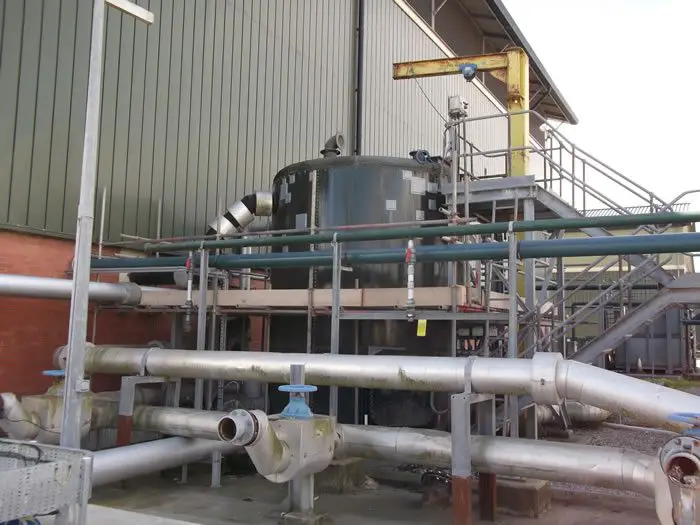Every day, the Queen Mary Reservoir holds 910,000,000 litres of water. The water is drawn in from an intake channel fed from the Thames, before it is turned into enough fresh water to supply one of the busiest cities of the world. After nearly a century of activity, and following several refurbishments to machinery and equipment throughout the years, the centrifugal pumping system was ready for another major upgrade.
Background of the project
The pumps were originally commissioned in 1924 for the Metropolitan Water Board and were driven by uniflow steam engines. Since the Reservoir was officially opened in 1925 by King George V and Queen Mary, the machinery has been upgraded several times and the pumps are now driven by electric motors.Whilst the reservoir is situated in Littleton, a Saxon place name meaning ‘a small settlement’, the reservoir itself bears little comparison to its location’s namesake. Covering a water area of 723 acres and a circumference of roughly 4 miles, at the time of its completion the reservoir was the largest free-standing reservoir in the world and to this day continues to supply water to a large area of London as well as the surrounding counties.
Application situation
After years of frequent use, certain areas of the pumping equipment were suffering from cavitation damage, which in turn was seriously hindering the efficiency of the pumping system.This needed to be promptly addressed andso a thorough inspection including a hydraulic profile wasarranged.
Due to the physical size and weight of the top half of the pumpcasing, it was not practical to turn the casing over, therefore, the casing wasmounted on blocks (supported by the crane for safety) and scanned from underneath. During this inspection, each casingwas identified as having Substrate Corrosion To Rust Grade D. This is the highest level of corrosion grade on the scale, indicating severe rusting of the cast iron and pitting. (ISO-8501-1)
Once the hydraulic profile was completed and all the equipment had been scanned, it was decided that several refurbishmentapplications should be carried out on three of the pump volutes, totalling a surface area of 282m². Due to the extent of the damage (some areas of each volute exhibited up to 50% corrosion) complete metal repairs were prescribed followed by a protective coating. Rebuilding and protection were required to restore the heavily corroded cast iron substrate so the pump could continue to perform at its maximum efficiency. After inspecting the impellers, each of them consisting of a surface area of 44.5m², it was decided that once each had undergone a thorough cleaning, they could be put back into service.
Application method
Firstly, all machined faces were protected from the blasting process before Sponge Blasting equipment was used on the upper and lower casings. This was used to remove the previous coating, create a substrate cleanliness of at least SA 2 ½ and produce a surface profile of no less than 75µm.The application area was then vacuumed and examined to make sure it was dust free and allthe blast media was removed.
Image 8- Pump casing prior to removal of existing coating Image 10- Sponge Blasting in progress
Once the substrate had been tested for salt contamination, the application areas were masked outready for the application of Belzona 1111 (Super Metal). Applied using a Belzona applicator, this material was used to rebuild the areas of undulation and pitting damage. A solvent free epoxy resin reinforced with silicon steel alloy, this repair composite provides robust corrosion resistance and will ensure the substrate will remain protected when it comes into contact with abrasive material.
After Belzona 1111 had cured and within the two-hour coating window, the first coat of Belzona 1341 (Supermetalglide) in a grey colour was brush applied. This was followed by the second coat in blue to achieve a total dry film thickness of 400 microns. This coating was specified as it willprovidelong-term erosion and corrosion protection to the equipment and improve the efficiency of the pump. In fact, Belzona 1341has been proven to increase efficiency by up to 7% on new equipment and up to 20% on refurbished equipment. It does this by using hydrophobic technology which repels process fluids and reduces the turbulent flow.Once cured, the coated surfaces were thoroughly checked over for any misses or pin holes.
By using modern polymer technology, Belzona was able to restore the centrifugal pumping equipment and ensure the historic Queen Mary Reservoir was back to running as smoothly and efficiently as possible.
Further Information
·Belzona was first established in 1952 in Elland, West Yorkshire before moving to its current Head Office in Harrogate in 1992.
Belzona is a world leader in the design and manufacture of polymer repair composites and industrial protective coatings for the repair, protection and improvement of machinery, equipment, buildings and structures.
Belzona is not just a product but a complete service with a global distribution network of over 140 Distributors operating in 120 countries.
Belzona operates from four corporate offices in Harrogate, UK, Miami, USA, Chonburi, Thailand and Ontario, Canada.
At Harrogate, the full Belzona product range is manufactured to stringent quality and environmental control guidelines complying with the requirements of ISO 9001:2008 and ISO 14001:2004.
Various case studies and success stories can be found at khia.belzona.com

